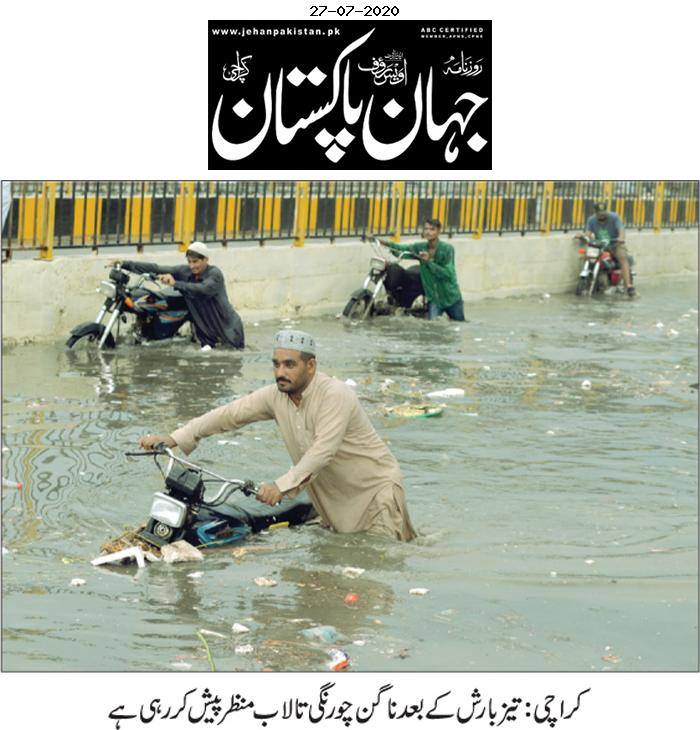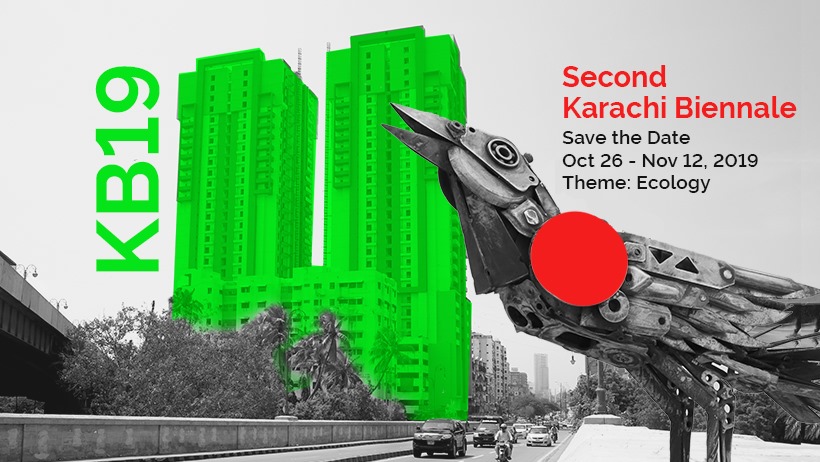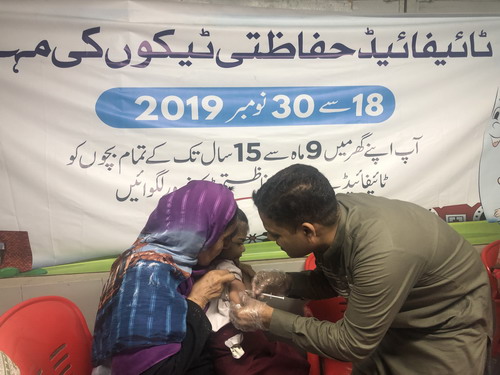This year Monsoon rains have drowned most areas in the port city of Karachi, especially its posh localities of Clifton and the Defence Housing Authority (DHA). The torrential rains started on Saturday and continued on the first and second days of Eidul Azha with intervals flooding the residential and commercial areas of District South and East causing urban floods.
Even though all areas of the city received heavy rains, the situation in downtown and posh localities of DHA remained the worst, where all roads were inundated and water entered into homes. The low-lying DHA Phase-4 was the worst-hit area.
The main arteries of the city like Sharae Faisal and M. A. Jinnah Road remained flooded with knee-deep water rains and in the posh locality of DHA water entered the luxurious homes and shops in the markets. The local media reported heavy rains in the South District of the port city of Karachi, where commercial centres of Saddar, Boulton Market, Tower, I. I Chundrigar Road, Clifton and Defence are located.
Vehicles and bikes broke down due to rainwater on thoroughfares, causing a lot of difficulties for commuters. The situation in Katchi Abadis and low-lying areas was even worse as the homes of the poor were flooded with rainwater. The overflow of the Malir River has caused the closure of main roads leading to the Korangi area. The gushing water has damaged a major portion of the causeway from Qayoomabad to Korangi Crossing and traffic is diverted towards Jam Sadiq Bridge, which is the only thoroughfare left to reach the Korangi area and industrial area.
The traditional festive look of the Eidul Azha remained marred due to heavy rains and people avoided visiting their relatives due to rains and standing water on roads. Whereas people sacrificed animals during the rains with a lot of difficulties and lack of facilities for disposing of the offals. The municipal staff remained busy draining out the rainwater, therefore, the lifting of offals and remains of the sacrificial animals remained stagnant at the garbage points and main roads.
Most of the electronic media reporters and opposition PTI members of the Parliament were seen bashing the provincial government of the Pakistan People’s Party, which has been ruling the province of Sindh since 2008. Interestingly, Clifton and DHA come under the Cantonment Board Clifton (CBC), which is responsible for the water and sewerage of these areas. Most of the Saddar Civil Lines and Cantonment areas in the South District are under the control of the Karachi Cantonment Board.
Similarly, the Karachi Metropolitan Corporation (KMC) and its District Municipal Corporation (DMC) of Karachi South are responsible for the water and sewerage of the rest of the civilian areas in old city areas like Lyari, Ranchhor Line, Garden and Gizri. But most of the media\’s lashing targeted the city and provincial governments. KMC Administrator Barrister Murtaza Wahab and even Chief Minister of Sindh Syed Murad Ali Shah were seen on the roads, supervising the draining out of rainwater, when the rain stopped in the afternoon on Monday.
Main underpasses in the city’s downtown areas like Submarine Chowk and Shon Circle underpasses were filled with rainwater, which was cleared after a 12-hour dewatering process. The underpass built by Bahria Town near the shrine of Abdullah Shah Ghazi was also inundated due to the rainwater.
According to media reports, at least five people lost their lives due to electrocution and another person died due to the collapse of a wall in the city on the second day of Eid on Monday. The Pakistan Meteorological Department (PMD) reported that its observatories at PAF Masroor Base recorded the highest amount of rainfall of 119.5 mm in the last 24 hours followed by DHA Phase 2 with 106.6 mm, Quaidabad with 76 mm, PAF Faisal Base with 65 mm, Orangi Town 56.2 mm, Gulshan-i-Hadeed 46.5 mm, Nazimabad 31.8 mm.
Karachi experienced urban flooding due to the same kind of torrential rains in 2020 and the provincial government had also come under severe criticism due to its failure to drain the rainwater. The provincial government spent millions of rupees on the restoration of the main stormwater drains of the city including Gujjar Nallah, and Mahmoodabad Nallah. The World Bank provided funds for this work, which was carried out by Frontier Works Organisation (FWO), a subsidiary of the Pakistan Army. But this time those Nallahs did not provide any relief, despite the fact thousands of homes have been removed from both bands of these main drains.
The Sindh government claims that more than half of the city is under eight cantonment boards, DHA and Karachi Port Trust (KPT) so these departments are responsible for the drainage of the areas under their control. Moreover, the reclamation of lands for the construction of housing society along the coast has also caused blockage of the natural flow of the main storm drains.



